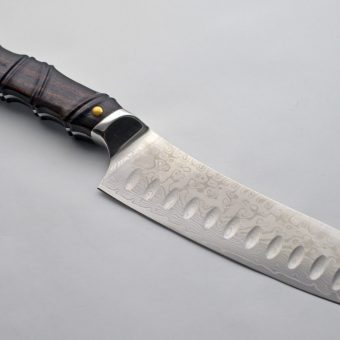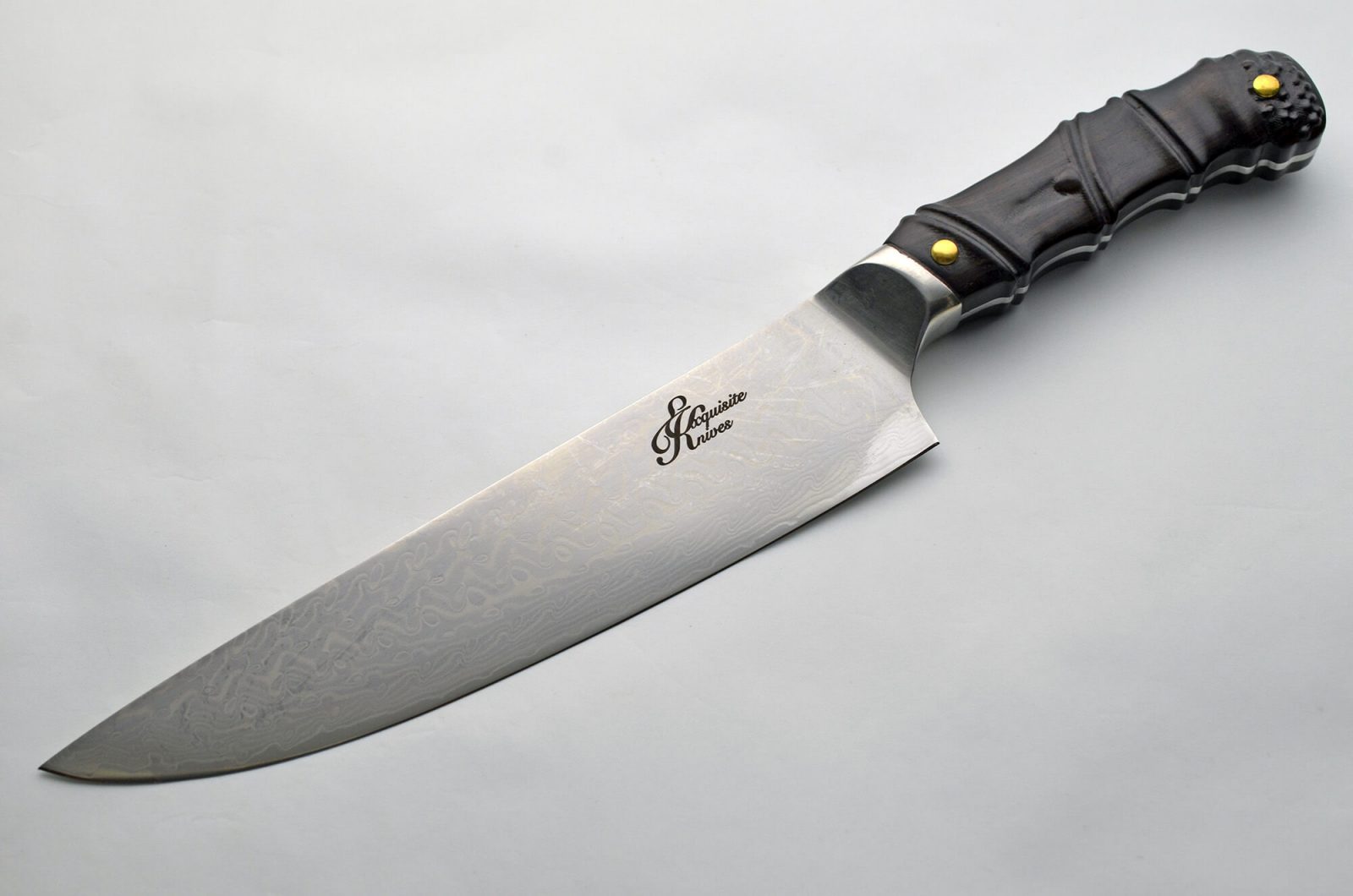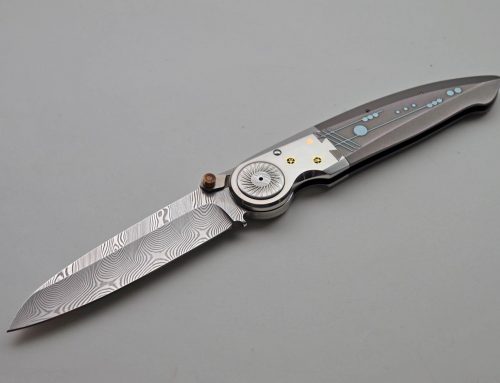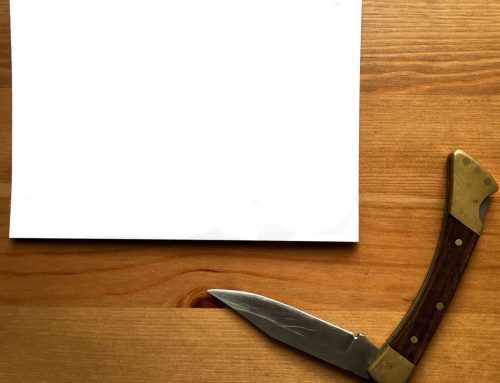Ah, the kitchen! It’s where all of the magic happens. Slice and dice, carve and pare, cut, gash, and slash! Knives are a fundamental tool in the kitchen that give shape to your cuts of fruits, meats, and vegetables. Understanding the function of each knife can help you master the craft of home-cooking and can make you a real hit at dinner parties. As a home chef, working with the best available tools and the right blade will demonstrate your superior skill and knowledge of the craft; there is a function for the different types of kitchen knives and any knife owner should know the nuances. Personally, I wouldn’t be caught dead trying to skin an orange with a meat cleaver, but to each their own.
Types of Knives in The Kitchen
1 – The Chef’s Knife
Also known to some as the cook’s knife, this is the staple of any kitchen knife set. Featuring a broad blade with an upward tapering, the chef’s knife is great for precision mincing. Blade can vary from 6 to 12 inches long depending on the maker. Generally, the longer the length, the easier the slicing will be. A shorter knife should be under consideration if you have smaller-than-normal hands. We have our very own chef’s knife for sale if you’re looking for a top-quality blade. We also carry 8” and 10.5” sizes for different-sized hands.
2 – The Utility Knife
This is a great option for slicing/cutting meat, fruit, or vegetables with a thicker skin, such as watermelons, squash, and eggplant. The knife can be straight, serrated, or scalloped for flexibility and versatility in cutting. It’s great to have when preparing sandwich meat, leafy vegetables such as cabbage, and tomatoes (for the serrated edge). Typically, the utility knife will be between 4-7 inches and is treated like a small chef’s knife.

3 – The Santoku
This is the Japanese-style of the classic western-style chef’s knife. Santoku, in Japanese, means “three virtues”. What are the three virtues you ask? Mincing, dicing, and slicing. Generally thinner and shorter than its western counterpart, the flat blade does not rock on the cutting board, which makes it less-than-ideal when mincing herbs, but a better choice when looking to fashion skinny slices of vegetables. Our Wood Santoku is an excellent choice for the discerning home chef.
4 – The Boning Knife
This knife is used to separate the meat from the bone, and to cut a tasty filet out of a whole fish. Blades are usually 3-8 inches in length, with a stiff blade being the popular choice due to enhanced precision over flexi or semi-flexi blades. There is also a knife called the fillet knife, which is specifically meant to cut thin slices of fish. The fillet knife has a thinner, longer, and more flexible blade.
5 – The Cleaver
This is the knife you always see the villain carrying in a horror movie. With a thick spine and an extra-strong blade, this knife is meant for chopping meat and bone, and tough vegetables such as squash, eggplant, and pumpkin.
6 – The Paring Knife
These tiny knives can be used to peeling fruits and veggies, and trimming small bits of fat off of meat. If you love to make cocktails with garnishes, this 3-4-inch blade is a must-have.
7 – The Steak Knife
Either used at the table or at the cutting board, these small knives are heavily serrated to cut through meat and other cooked-foods.
Types of Kitchen Knives: Our Custom Knives
The next time you visit a knife store or blademaster, you’ll be in-the-know! Different knives serve different purposes and this knowledge will make your life easier in the kitchen. Our store contains multiple chef’s knives and a wood Santoku custom-made by Exquisite Knives for your mincing and slicing pleasure! We also carry a number of hard-to-find, custom, and collectible knives. For the exclusive knife collector, our shop may be your next destination. If you have any questions about our knives or our process, give us a call at (760) 310-4078 or visit our contact page today.
March 12, 2019




